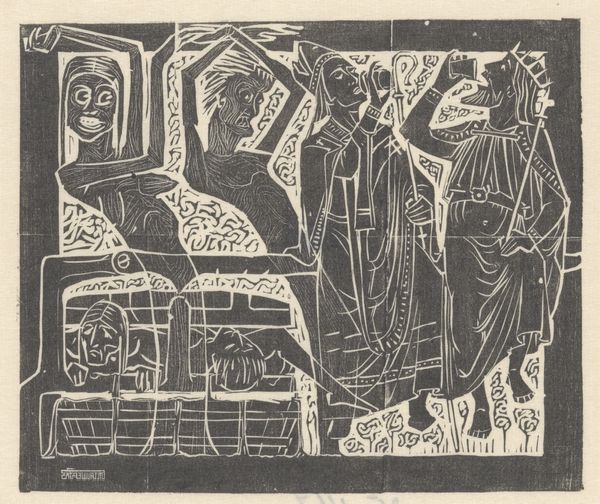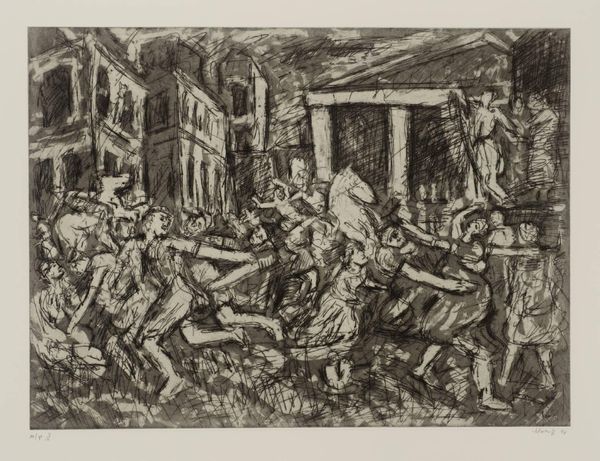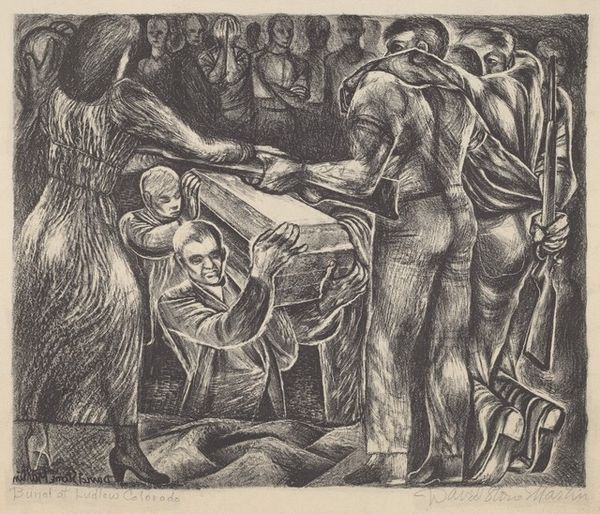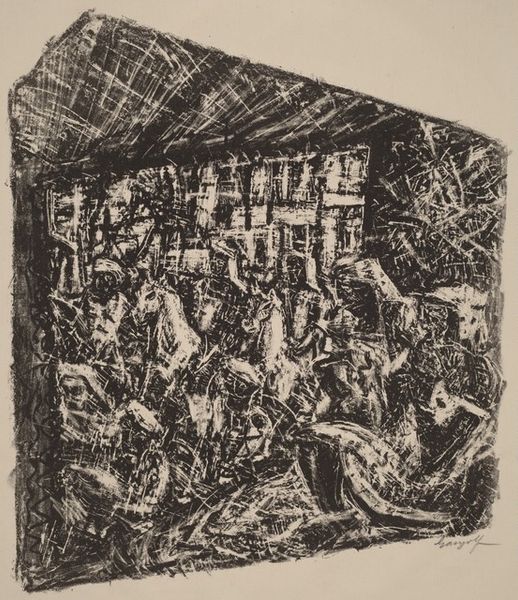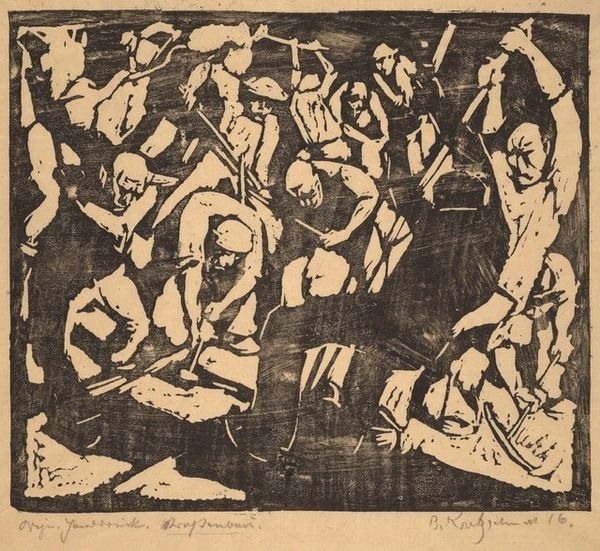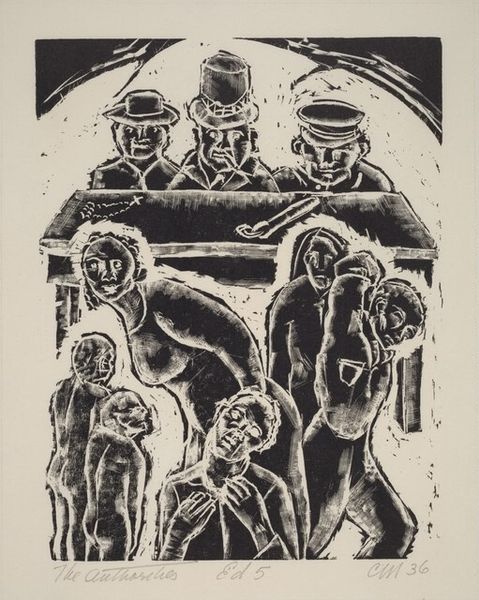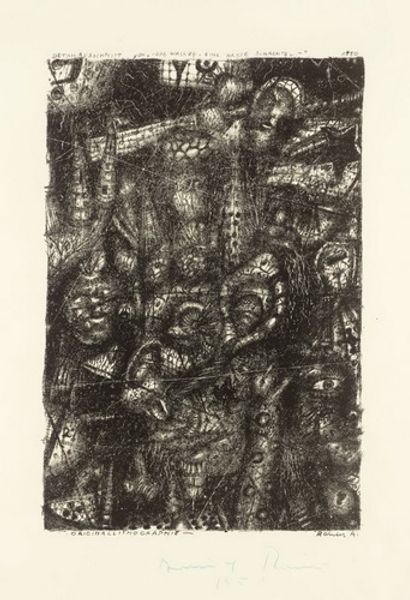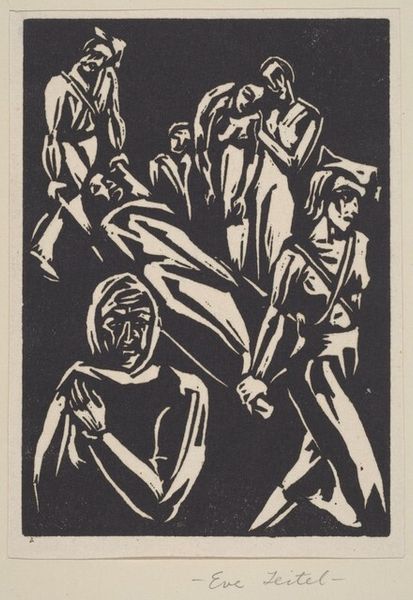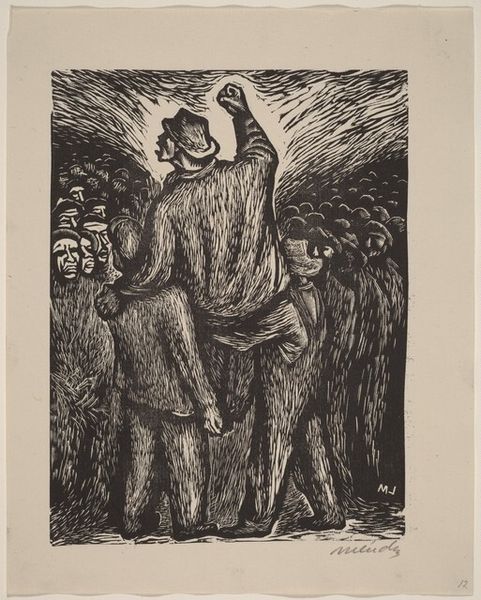
Dimensions: sheet: 62.2 x 76.2 cm (24 1/2 x 30 in.)
Copyright: National Gallery of Art: CC0 1.0
Editor: This is "Crossing the Border," a woodcut print by Paul Marcus, created sometime between 1980 and 1985. It's a stark image, a tightly packed group rendered in high contrast. It feels very raw, like a snapshot of human struggle. What catches your eye when you look at this print? Curator: Immediately, the starkness of the woodcut commands attention. Think about the artist’s process: carving away at the wood, the deliberate removal of material to create this scene. It suggests a laborious, almost brutal process, mirroring the harsh realities the image depicts. Notice the detail, or lack thereof, in the figures themselves. What does this tell us about how the artist viewed his subjects? Editor: It's interesting you mention the process. I hadn't considered how the medium itself informs the message. The figures are so simplified; they almost become symbols. I wonder about the border itself—is it a physical boundary or something more abstract, a social or economic divide? Curator: That's exactly what I want us to consider: the context of production, distribution, and how we interpret these subjects as consumers of images. Where would such a piece have been displayed, and to what audience? The Black Arts Movement prioritized accessible art, and printmaking allows for wider dissemination. So, what story is being told through both the image and its method of delivery? Are we, by viewing it in this context, perpetuating a cycle of consumption of others’ narratives? Editor: That’s a really powerful point about accessibility and consumption. Knowing that the printmaking allowed the message to spread further adds another layer to the work. Curator: Precisely. Think about the labor involved in producing each print, each copy carrying the weight of the original artistic vision, yet also altered through each stage of its manufacture and distribution. Consider also, how the social context impacts meaning and consumption. Editor: I see this piece very differently now! It's not just a representation of crossing a border, but a statement about visibility, labour and, even, access. Curator: Precisely. It’s about the conversation this artwork generates through its materiality.
Comments
No comments
Be the first to comment and join the conversation on the ultimate creative platform.


